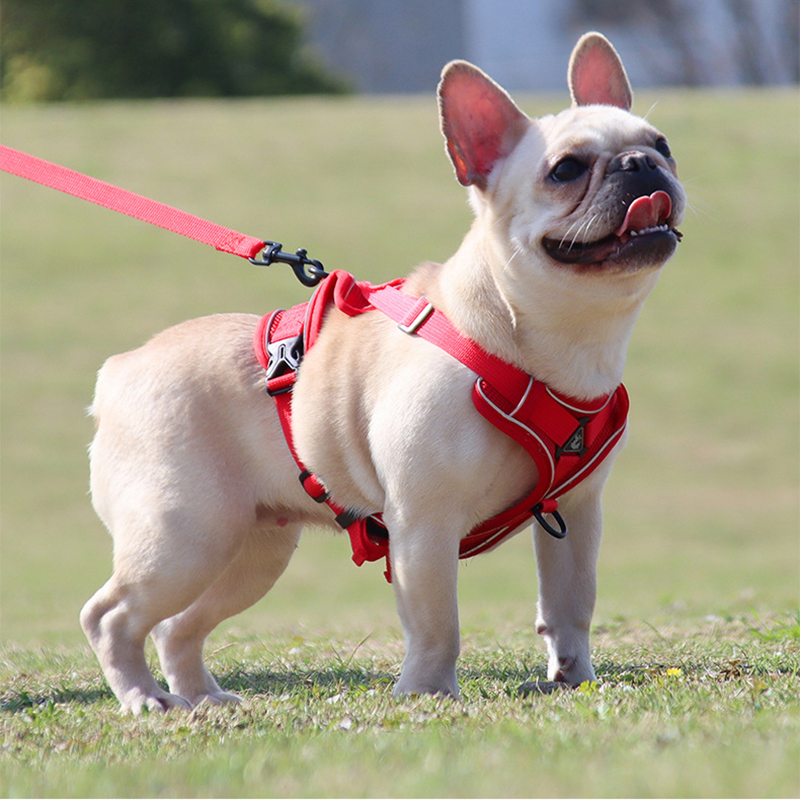Can A Dog Harness Hurt A Dog?

Can A Dog Harness Hurt A Dog?
Dog harnesses have become a popular alternative to traditional collars for controlling and managing pets, especially for breeds that are prone to respiratory issues or have a history of pulling on the leash. Harnesses offer more control and distribute pressure across a dog’s chest, minimizing the strain on their neck. However, many dog owners wonder: Can a dog harness actually hurt a dog? In this blog, we’ll explore this question, discussing both the benefits and potential risks of using a harness, and offering tips on how to avoid common issues.
The Benefits of Using a Dog Harness
Harnesses are widely regarded as safer for dogs, especially for puppies, smaller breeds, and dogs with respiratory or neck issues. Here are some reasons why many pet owners choose them:
- Pressure Distribution: Harnesses distribute pressure over the dog’s chest and shoulders, reducing the likelihood of neck injury, especially in breeds prone to tracheal collapse.
- Better Control: Harnesses allow owners more control over their dog’s movement without causing discomfort or injury. This is particularly useful for large or energetic dogs that tend to pull.
- Reduced Choking Risk: Unlike collars, harnesses don’t put direct pressure on the throat, reducing the risk of choking.
- Discourages Pulling: Some harness designs, particularly no-pull harnesses, help to discourage pulling by shifting the dog’s balance and making it harder for them to lunge forward.
How Can a Harness Hurt a Dog?
While harnesses have many advantages, they can still potentially harm a dog if not used correctly. Here are some common issues that can arise from harness use:
1. Incorrect Fit
A poorly fitting harness can cause rubbing, irritation, and even injury. A harness that is too tight can chafe the dog’s skin, especially in areas like the chest, armpits, and shoulders, leading to discomfort and sores. Conversely, a loose harness may shift and rub, causing friction burns and abrasions. To avoid these issues:
- Check fit regularly: You should be able to slip two fingers between the harness and your dog’s body.
- Adjust as needed: Some dogs may gain or lose weight, or their fur may grow and change the fit of the harness.
2. Improper Use of a No-Pull Harness
No-pull harnesses are designed to reduce pulling by placing a front clip on the chest, which discourages forward motion when the dog pulls. However, frequent pulling against a front-clip harness can cause strain on a dog’s shoulders or misalign their gait over time. If your dog constantly pulls, consider training to help reduce pulling rather than solely relying on the harness.
3. Restrictive Designs
Certain harnesses restrict a dog’s natural shoulder movement, especially ones with a tight or stiff chest strap. This can limit their range of motion, causing discomfort or even musculoskeletal issues with prolonged use. Look for harnesses with a Y-shape or those specifically designed for free movement.
4. Allergy or Sensitivity to Materials
Some dogs may have sensitivities or allergies to certain materials in the harness. Nylon, for instance, is a common material, but some dogs may have skin reactions to it. Be sure to check your dog’s skin for signs of redness, rash, or irritation after wearing a harness.
5. Leaving the Harness On for Too Long
While harnesses are great for walks and outings, leaving them on all the time can lead to discomfort and irritation. Dogs should not wear a harness for extended periods, especially while resting or sleeping, as this can lead to pressure sores and restrict their skin from “breathing.”
How to Choose a Comfortable Harness for Your Dog
To ensure your dog’s harness is comfortable and safe, here are some tips for choosing the right one:
- Measure Your Dog: Proper measurement is key to finding a harness that fits well. Measure your dog’s chest and neck to match the size chart of the harness you’re considering.
- Opt for Adjustable Designs: Harnesses with adjustable straps allow for a more tailored fit, accommodating any minor weight or coat changes.
- Check the Material: Choose a material that’s soft and breathable, such as padded nylon or neoprene. If your dog has allergies or sensitive skin, consider hypoallergenic options.
- Consider Your Dog’s Activity Level: If your dog is very active, a harness that allows for natural shoulder movement is ideal.
- Look for Padding: Harnesses with padding around the chest and shoulder areas are often more comfortable, especially for high-energy dogs that might pull occasionally.
Proper Training to Minimize Harness-Related Issues
Sometimes, a harness-related issue may be resolved by training your dog to walk calmly on a leash. Here’s how training can help:
- Teach Loose-Leash Walking: Training your dog not to pull can prevent unnecessary strain on their body, even with a harness.
- Practice Regular Walks: Regularly walking with a harness can help your dog get used to it and avoid agitation or “over-excitement” issues.
Conclusion
Harnesses are generally a safe, comfortable option for most dogs. However, like any piece of equipment, they can pose risks if not used or fitted properly. By ensuring a good fit, choosing the right style, and training your dog to walk calmly on a leash, you can minimize the chances of a harness causing discomfort or injury. Always observe your dog for any signs of discomfort and consult your veterinarian if you notice persistent issues. With the right harness and a little care, you and your dog can enjoy many safe, comfortable walks together!











Leave a comment
You must be logged in to post a comment.